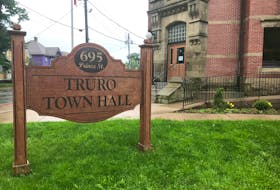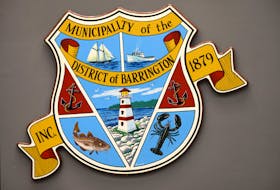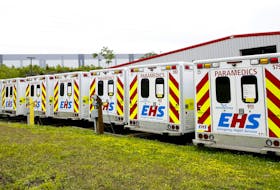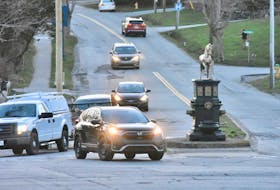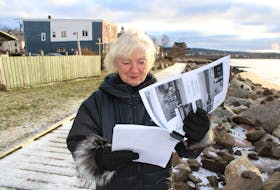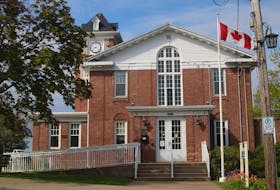
WESTVILLE – A toddler playing on a tiny bicycle in front of the funeral home while hundreds lined the street to pay their respects to his dead father. Inside a pregnant wife mourning for her husband.
There are images Art Eagles will remember for his entire life and these are two of them.
As a funeral director, Eagles deals with death daily, but for him there has never been any that can compare with the impact the Westray mine explosion had on the community.
There were 26 men killed in the Westray Mine disaster on May 9, 1992. While Eagles Funeral Home would only end up caring for three of the services, as president of the Nova Scotia Funeral Directors Association that year, Eagles had the task of making sure all the funeral homes throughout the province that had miners lost from there area were informed about it.
“They were from communities all over, not just Nova Scotia, but Newfoundland and Ontario, England,” he said. “We had somebody from Springhill, one from Truro, two from Antigonish County.”
But the ones that were from the county were hard losses to take.
Eagles doesn’t remember hearing anything on the 8 a.m. news on the radio that morning about the disaster, but when he went into the local hardware store, someone informed him that something had happened at the mine.
“Within a few hours listening to the news and listening to the magnitude of the explosion, I had big fears of the results,” he said.
He personally knew several men who worked there and remembers throughout the small community people were trying to figure out who was in the mine and who wasn’t. A mining community, the town had plenty of people who knew the devastation that explosions like this could cause and everyone was worried.
“As the weekend went on it became clear who was among the missing and who wasn’t,” he said. “I was familiar with several of the names. Three in particular were personal friends of ours.”
When 11 of the bodies were discovered, it was with sadness that some of the local funeral directors were called upon to help identify some of the deceased.
The New Glasgow Stadium was set up as a makeshift morgue where the bodies would be prepared and released to the proper funeral directors and Eagles remembers arriving at the stadium at around 8 p.m. Sunday, May 10. The bodies were supposed to be released that evening but it wasn’t until 7 a.m. the next morning before that actually happened, so the funeral directors just spent the night there.
Eugene Johnson in particular was a close friend of Eagles, and the other men from Westville he was well acquainted with. Some people wrongly assume that funeral directors are emotionless or that tragedy doesn’t affect them, Eagles said. But that was far from the truth and he like others was devastated by the losses.
“It was very emotional, but at the same time you had to keep your professional level,” he said. “At the end of the day when you go home and put your head on your pillow you’re a human being and you replay over and over again the events of the day, but at the time you have to keep your composure and your professionalism. You have to do that.”
From a funeral director’s perspective one of the challenges of dealing with the large tragedy was the huge crowds that came to the viewings and funerals.
“We had people coming to the funeral home to visit that didn’t even know the victims or the families, but were caught up in the emotion of the event.”
He could understand their desire to be there and mourn as a community, but at the same time he tried to make sure the miners’ families had a place of their own to grieve.
There was also the question of what to do about the media. Dozens of reporters from across the country had convened in the county and there was the question of what they should be allowed to do during the funerals.
Working with the police, Eagles took the initiative to deal with the situation. He offered them a certain spot in front of the churches where they could take pictures of people entering and exiting the church on the condition that they not enter the church themselves or bother the mourners.
One person still complained as he walked out of the church and saw the cameras flashing, Art’s brother David remembers.
Art turned to the man and said to not be upset.
“They’re trying to bring your message to the rest of the world,” he said.
Eagles still has clippings from the tragedy that he keeps at the funeral home and there are the mental images from the time that still come to his mind. He has often seen families mourn, but never in such a way as Westray.
“It became a community affair,” he said. “A community event.”

